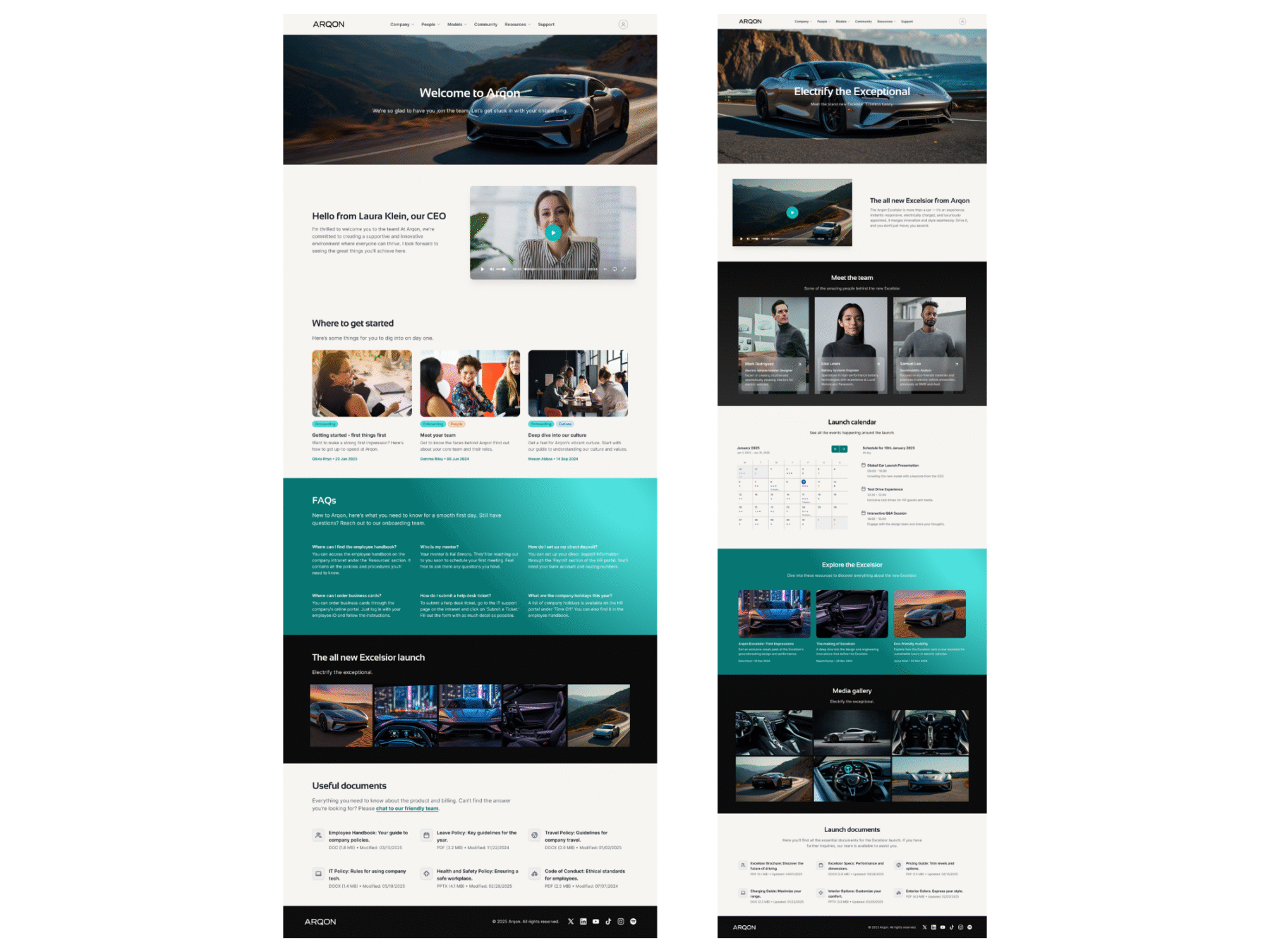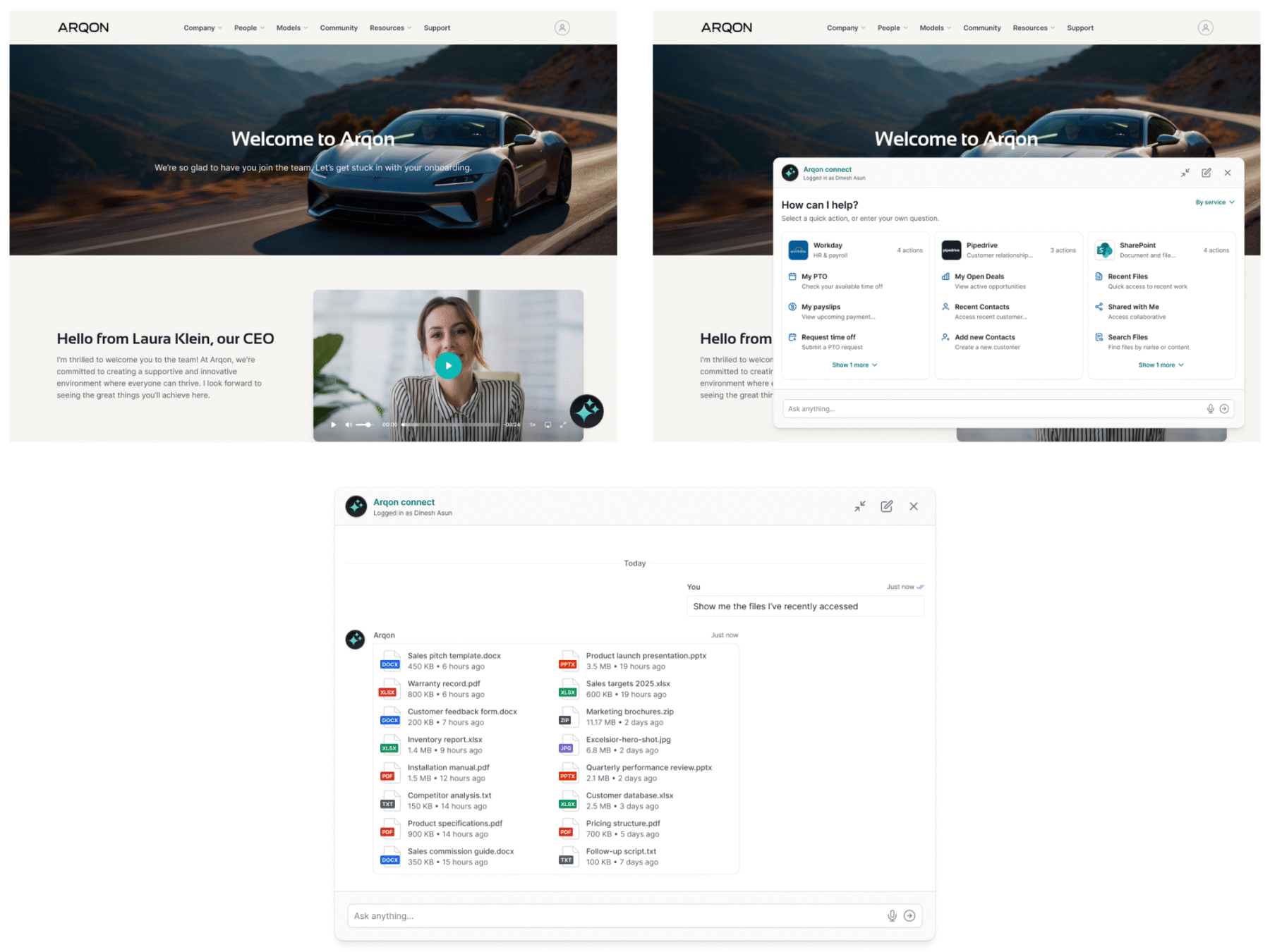
Unily Futures: An Announcement from Unite 25
I was lucky enough to be given an advanced look at ‘Unily Futures’, which has just been announced at Unite in Nashville. Unily Futures is the latest of the industry AI capabilities to be announced, but I can honestly say it’s different from much of what I’ve seen before.
Because Unily have built their own AI.
By this I mean they’ve built an employee experience AI agent, which has been trained on the expertise of Unily consultants and engineers to help platform managers “translate their ideas into intranet realities”. While this still relies on human written prompts or files to form the basis of intranet content, it’s very easy to create attractive results that can be tweaked by hand.
Creating an intranet from scratch from a few simple prompts
For those who are building a whole intranet or specific intranet section from scratch, Indy (the AI) simply needs a prompt. This can be as simple as naming the company (and platform), plus the pages you know you will need. Unily have said that Indy can be trained with organisational data, such as employee survey results, which will help it understand the company far more than other AIs.
Indy will then start building, showing progress by highlighting a simple wireframe plan with the content that’s been completed. Indy will also ask further questions, clarifying what content types will be needed, such as news, blogs and FAQs.
I really like that branding can be applied simply by sharing a website URL into Indy when prompted. Indy will then draw out colour palettes and logo variants to create an attractive intranet design. At the same time, Indy will learn brand voice and industry context to apply to anything it generates. It’s worth noting that the design will include AI generated images and videos, which are certainly better quality than they were a year ago but still have their foibles. For those who don’t want generated media, Indy can position brand repositories in the design instead or you can manually click on an item to replace it.
Managing sites and pages so you can focus on content
Once pages (which are Unily’s term for themed content containers) have been created, it’s easy enough to create the content within them. This could be via uploading a document, such as a drafted news story, or a series of prompts, for example to create some basic events entries. Appropriate templates will be applied, along with suitable metadata, titles, and extracts.
It’s very important to note that the output of everything generated via Indy is available to edit before publication. So, while Indy will respect formatting etc. within a source document, it means you can tweak the output to ensure it’s entirely appropriate. Unily have therefore described Indy as an “accelerator” to give people a strong starting point, but any approval and final decisions will be in the hands of administrators.
Indy is also kept confined to an organisation’s tenant, meaning it learns from itself but not from other Indies, and in turn it doesn’t pass information out either. Unily says this is in keeping with their wider approach to AI and security which they summarise as “your data stays your data”.
Agentic AI that “thinks”
Unily’s AI features extend beyond creation through Indy into an Agent experience for employees. ‘Unily Glass’ is a native AI Agent tool that has been combined with an LLM, but is ring-fenced to an organisation’s data and business systems.
The integrations with business systems means Unily Glass can help employees complete tasks without having to navigate away. While this functionality is becoming more common in the industry, Unily says that the Glass “thinks” – making decisions based on the context of an individual and presenting results it believes are most likely wanted. In practice, Unily Glass uses natural language processing so that simple asks can be converted into integrated actions like forms, and mini dashboards etc.
I haven’t tested the robustness of this, but I like the mini dashboard output that presents a cluster of information for people to draw on. Take a look at our existing Unily review to see what AI features exist now that might carry through.
My initial thoughts
I’ve not explored an Indy intranet in any great depth, so I can’t comment on the appropriateness of things like information architecture or accuracy of user experience. Further internal comms type tools, governance features, and other detailed functionality is also not something I’ve seen, although I assume much of what we’ve reviewed will remain in place but via an alternative interface. And while Unily Glass understands context, at this stage it’s not clear whether a global organisation will need six benefits policies or whether it will ultimately be smart enough to look at a content block on a page to know “ah, you need the UK information block”.
Overall, I like the approach Indy takes because I think it will reduce the time needed by admins to configure and build. Indy relies on quality going in to get quality output, but without having to spend time uploading and tinkering then administrators and content owners will have more time to focus on the content. Indy is also drawing on years of experience from across their implementation, development, and product teams, and so the quality of the output that I’ve seen is higher than a more generic LLM.









